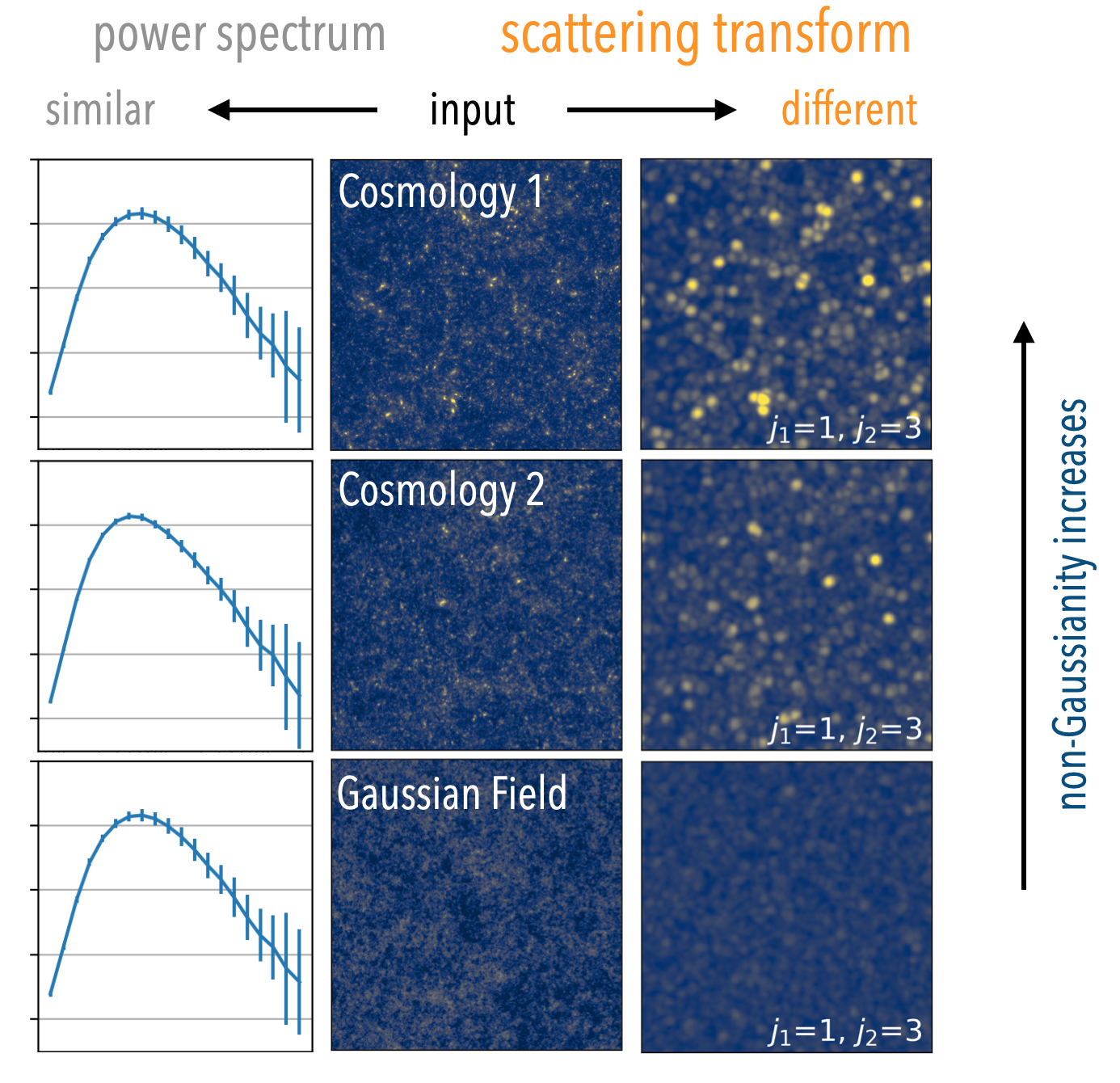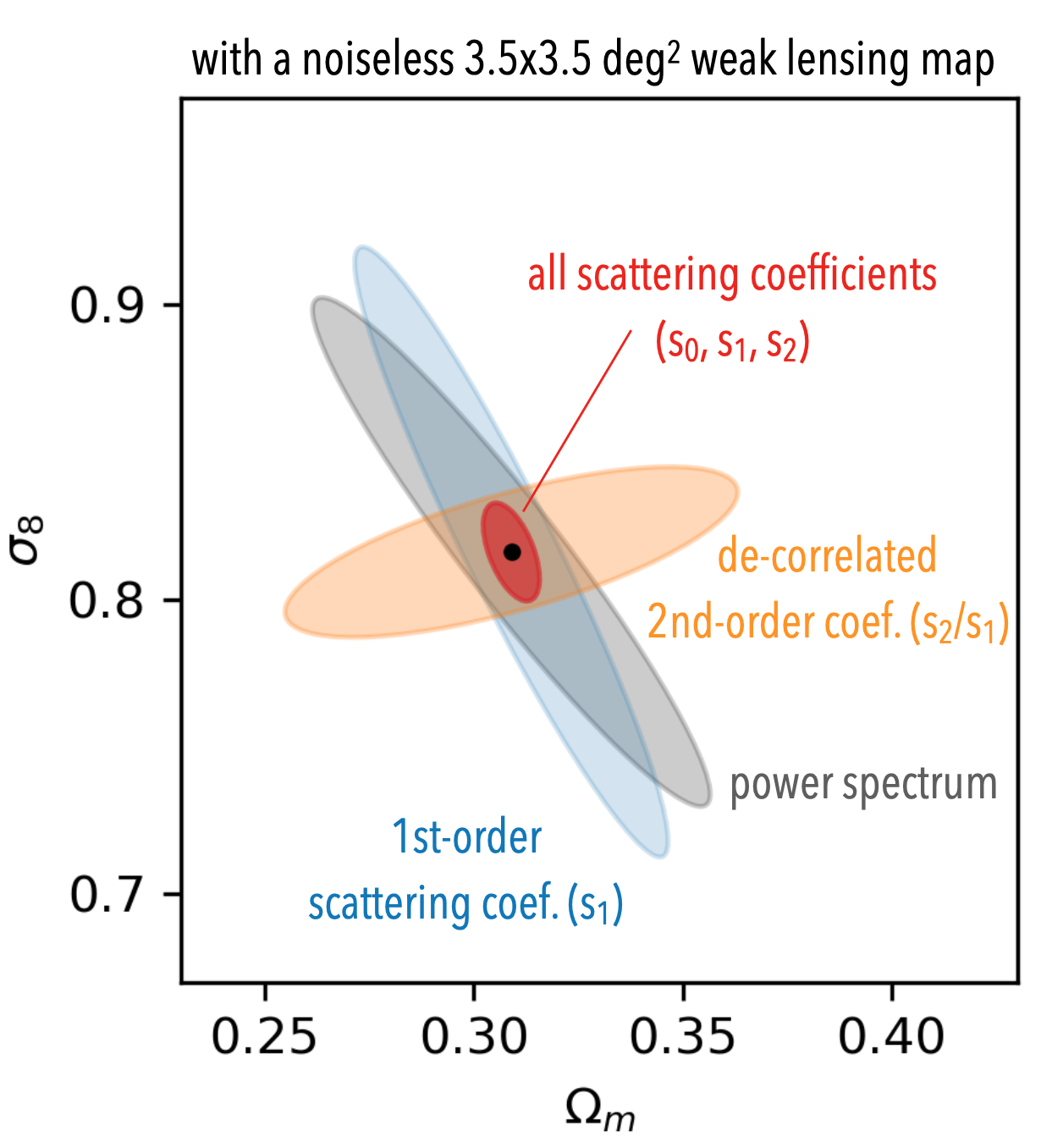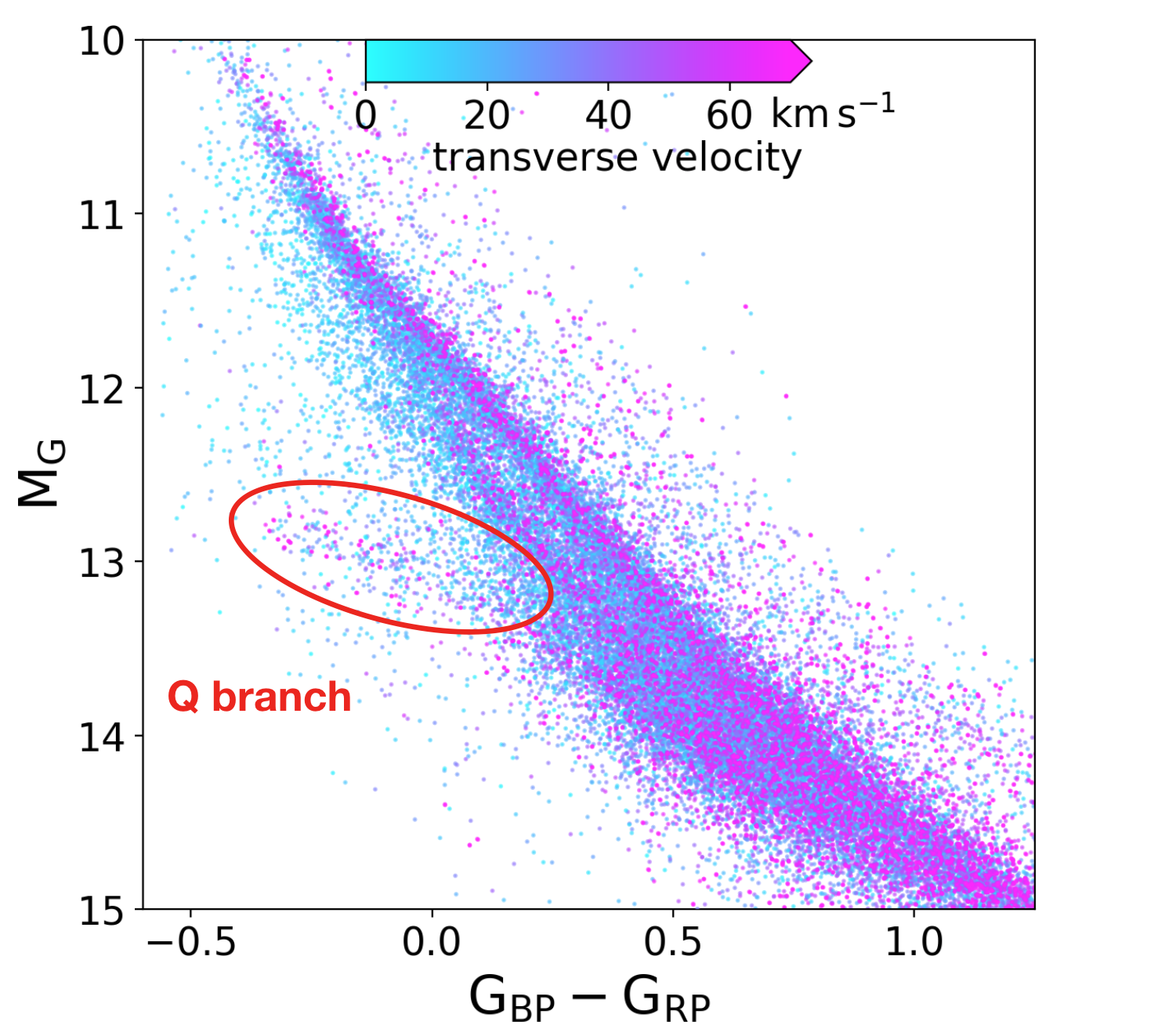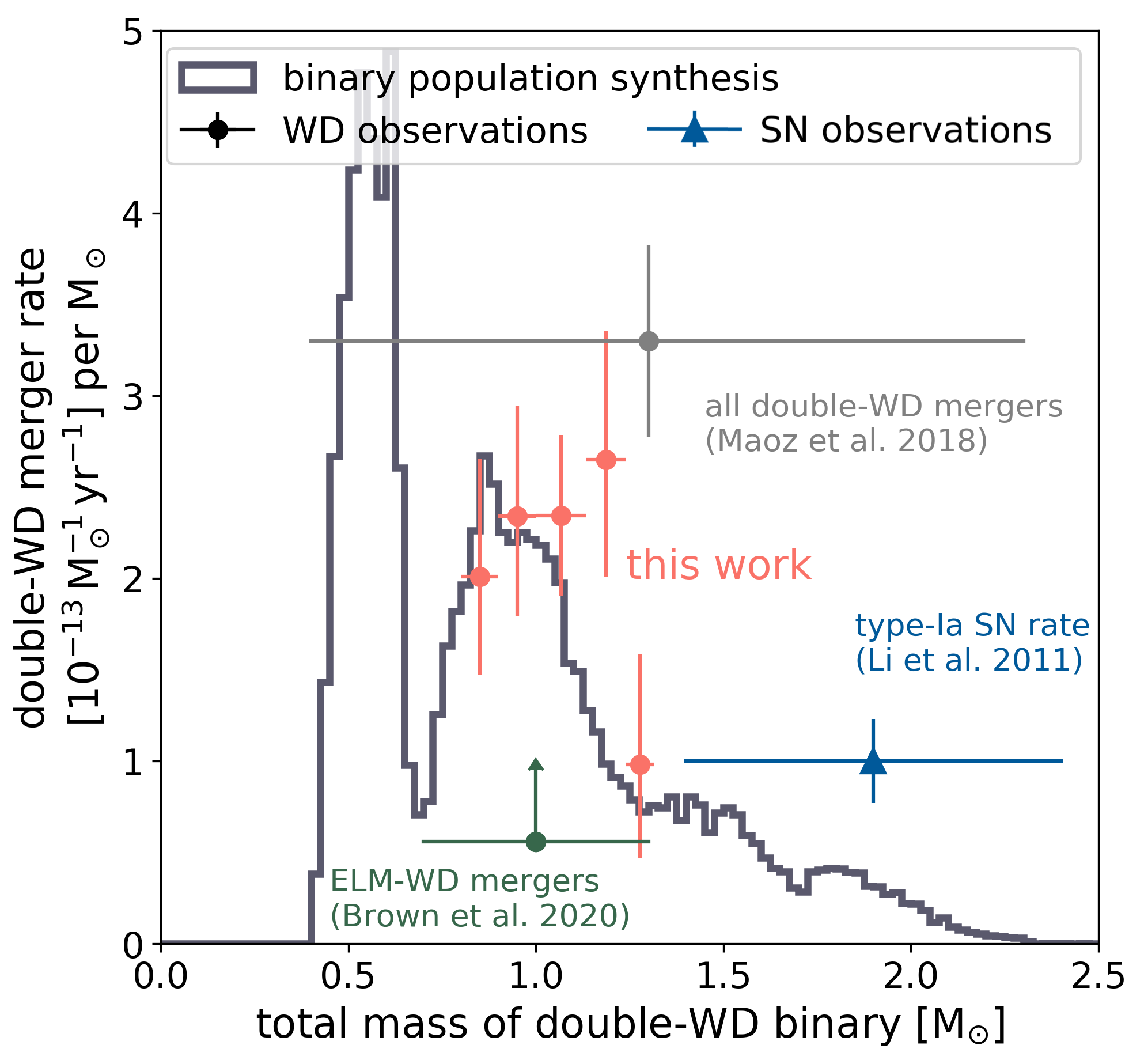Sihao Cheng 程思浩
我是程思浩,现在在普林斯顿高等研究院(IAS)和圆周理论物理研究所(PI)做天体物理博士后研究. 之前我在北京大学本科毕业,然后在约翰霍普金斯大学(JHU)获得博士学位并在巴黎高师(ENS)访问一年。我在成为专业天文学家之前是一名天文爱好者。
研究
===========================
我用统计方法分析巡天数据,并研究其中的天体物理问题。我的研究兴趣涉及宇宙学、恒星物理、动力学、(系外)行星。
我过去的工作成果包括:
- 展现了一种受神经网络启发而设计的统计量在宇宙学中的应用前景
- 发现了一类古怪的恒星,它们内部正在结晶并且依靠引力能发光
- 得到了最精确的双白矮星合并频率的测量
- 发现了一颗“木星候选体“,为研究大质量恒星旁的行星开启了新窗口
- 在太阳系中发现了一个古怪的矮行星候选体,有可能挑战第九行星的假说
我现在正在进行的工作包括:
- 用新方法绘制第一幅银河系相空间的清晰且平整的地图
- 搜索太阳系内可能存在的未知行星(第九行星/行星X)
太阳系最远的矮行星
在寻找第九行星/行星X时,我偶然发现了一个轨道古怪的遥远天体, 小行星中心的临时编号是2017 OF201。由于足够大,它大概率可以满足矮行星的标准,同时他的轨道延伸到非常远,很可能来自太阳系中神秘的奥尔特云区域。它的轨道参数还对第九行星的假说造成了挑战。这里是学术文章和一些报道:高等研究院,普林斯顿大学,媒体.


大质量恒星身旁也有行星吗?
传统方法很难发现大质量恒星旁的行星,因此,尽管人们已经发现了超过5000颗系外行星,却几乎没有一例在大质量恒星系统中。不过,大质量恒星“死去”后会演化成白矮星,在这样的系统中发现行星就容易很多了。我在斯皮策太空望远镜的数据库中找到一颗4倍木星质量的行星候选体, 并成功申请到了詹姆斯韦伯太空望远镜的观测时间来进行光谱观测。这种新方法为研究大质量恒星旁的行星打开了新的窗口。同时,这种系统很有意思的一点是,其中的行星(类似木星大小)比宿主星还要大很多,因为这些宿主是白矮星(约地球大小)!
如何统计地描述一个图片/物理场的形态?
从星云的照片到星系的网状分布,天文学中常常遇到需要对图像/物理场的结构进行统计的描述。,“散射变换”为这类问题提供了一个新方法。这一新统计量借用了卷积神经网络(CNNs)中的运算和概念,但同时拥有传统统计量的优势,无需调试或训练。它对输入图像反复进行“小波卷积+取绝对值”的操作,最后再对变换后的信号“取平均值”作为统计量。我首先将它应用在宇宙学中,分析了由宇宙物质不均匀分布造成的弱引力透镜效应。我发现它包含的宇宙学信息远高于传统统计量(如相关函数)而与卷积神经网络相近([1], [2], [3])。我在文章中还仔细讨论了如何直观理解这一新统计量。我的文章获得了国际天文统计奖。我相信它在天体物理以及其他科学数据的处理中将会有广泛的应用。
为了方便更多人使用,我写了一个python模块ST.py,可供自由下载使用。


Gaia数据中的新发现
去年我主要在研究白矮星。白矮星是宇宙中大多数恒星的最终归宿。我用“盖亚”(Gaia)巡天卫星的数据发现(1)一些白矮星有异常慢的冷却速度;(2)有些大质量白矮星是两颗小白矮星融合的产物(点击下图可以查看文章)。这一工作还被天文博客astrobites和AAS Nova报道.


我还写了一个python小工具WD_models,用来转换白矮星的测光数据和物理参数。
流星光谱
在高中,我和弟弟程思淼找到了一个用数码相机拍摄流星光谱的方法. 我们设计了一个棱镜装置接在相机镜头前,联系工厂订做了若干件并卖给了其他天文爱好者。下图是我们2010年冬天拍摄的双子座流星的光谱。2021年我们重新优化并做了一批新棱镜,价格在1000元人民币左右。如果您感兴趣请联系我们!

学习/工作经历
普林斯顿高等研究院
自然科学学院
2022-现在, 博士后研究员

圆周研究所
2022-现在, 访问研究员

巴黎高师
数据科学中心
2021-2022, 访问研究员
导师: Prof. Brice Ménard, Prof. Stéphane Mallat

约翰霍普金斯大学
物理与天文学系
2021-2022, 博士后研究员
2019-2021, 获博士学位
2017-2019, 获硕士学位
导师: Prof. Brice Ménard

北京大学
天文学系
2012-2016, 获学士学位
导师: Prof. Eric Peng (彭逸西)

发表文章
第一作者文章:
Cheng, S., Li, J., & Yang, E., Discovery of a dwarf planet candidate in an extremely wide orbit: 2017 OF201, 2025, arxiv:2505.15806
Cheng, S., Schlaufman, K. C., & Caiazzo, I., A Candidate Giant Planet Companion to the Massive, Young White Dwarf GALEX J071816.4+373139 Informs the Occurrence of Giant Planets Orbiting B Stars, 2024, arxiv:2408.03985
Cheng, S., et al., Cosmological constraints from weak lensing scattering transform using HSC Y1 data, 2025, JCAP, 01, 006
Cheng, S., Morel, R., Allys, E., Ménard, B. & Mallat, S., Scattering Spectra for Physics, 2024, PNAS Nexus
Cheng, S. & Ménard, B., How to quantify fields and textures? A guide to the scattering transoform, 2021, arXiv:2112.01288
Cheng, S. & Ménard, B., Weak lensing scattering transform: dark energy and neutrino mass sensitivity, 2021, MNRAS, 507, 1012
Cheng, S., Ting, Y.-S., Ménard, B., & Bruna, J., A new approach to observational cosmology using the scattering transform, 2020, MNRAS, 499, 5902
Cheng, S., Cummings, J. D., Ménard, B., & Toonen, S., Double White Dwarf Merger Products among High-mass White Dwarfs, 2020, ApJ, 891, 160
Cheng, S., Two delays in white dwarf evolution revealed by Gaia, 2019, Proceedings of IAU, 15(S357), 175
Cheng, S., Cummings, J. D., Ménard, B., A Cooling Anomaly of High-mass White Dwarfs, 2019, ApJ, 886, 100
Cheng, S., Cheng, S., Meteor spectral observation with DSLR, normal lens and prism, 2011, JIMO, 39, 39
重要:
Bédard, A., Blouin, S., Cheng, S., Buoyant crystals halt the cooling of white dwarf stars, 2024, Nature, (free access link)
Chandra, V., Hwang, H.-C., Zakamska, N. L., Cheng, S., A Gravitational Redshift Measurement of the White Dwarf Mass–Radius Relation, 2020, ApJ, 899, 146
Lu, C. X., Schlaufman, K. C., Cheng, S., An Increase in Small-planet Occurrence with Metallicity for Late-type Dwarf Stars in the Kepler Field and Its Implications for Planet Formation, 2020, AJ, 160, 253
其他:
Novaes, C., et al., Cosmology from HSC Y1 Weak Lensing with Combined Higher-Order Statistics and Simulation-based Inference, 2025, PRD, 111, 083510
Grandón, D. et al., Impact of baryonic feedback on HSC Y1 weak lensing non-Gaussian statistics, 2024, PRD, 110, 103539
Liu, G., et al., A new code for low-resolution spectral identification of white dwarf binary candidates, 2024, A&A, 690, A29
Hwang, H.-C., Ting, Y.-S., Cheng, S., Speagle, J, Dynamical masses across the Hertzsprung-Russell diagram, 2024, MNRAS, 528, 4272
Marques, G. A. et al., Cosmology from weak lensing peaks and minima with Subaru Hyper Suprime-Cam survey first-year data, 2023, MNRAS, 528, 4513
Ren, L., et al., A Systematic Search for Short-period Close White Dwarf Binary Candidates Based on Gaia EDR3 Catalog and Zwicky Transient Facility Data, 2023, ApJS, 264, 39
Euclid Collaboration, et al., Euclid preparation-XXVIII. Forecasts for ten different higher-order weak lensing statistics, 2023, A&A, 675, A120
Liu, D. Z., et al., Potential scientific synergies in weak lensing studies between the CSST and Euclid space probes, 2023, A&A, 669, A128
Camisassa, M., et al., Forever young white dwarfs: when stellar ageing stops, 2021, A&A Letters, 649, 7
Bauer, E. B., Schwab, J., Bildsten, L., and Cheng, S., Multi-Gigayear White Dwarf Cooling Delays from Clustering-Enhanced Gravitational Sedimentation, 2020, ApJ, 902, 93
Marigo, P., Cummings, J. D., et al., Carbon star formation as seen through the non-monotonic initial–final mass relation, 2020, Nature Astronomy, full text here
联系方式
scheng@ias.edu
+1 443 207 1532
Bloomberg Hall 150
1 Einstein Dr, Institute for Advanced Study
Princeton, NJ08540, USA
Sky Altas (Aladin)
–>



